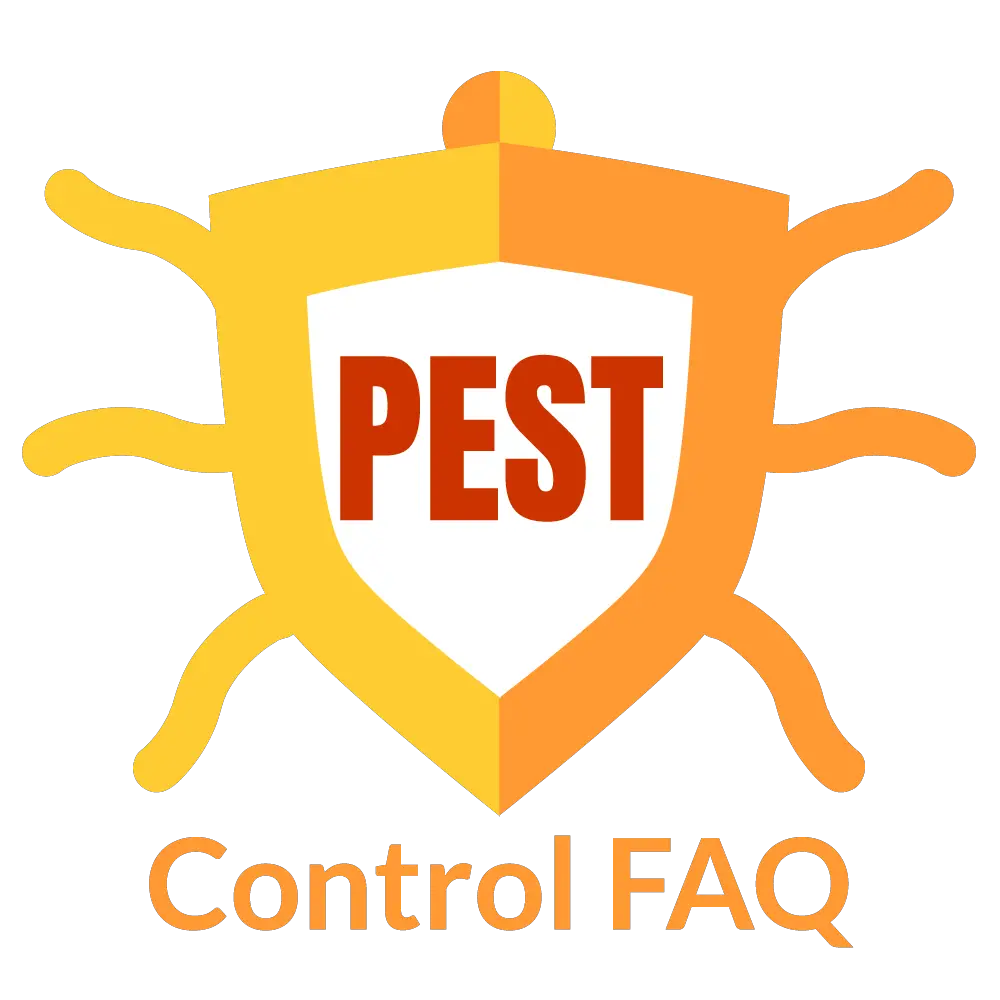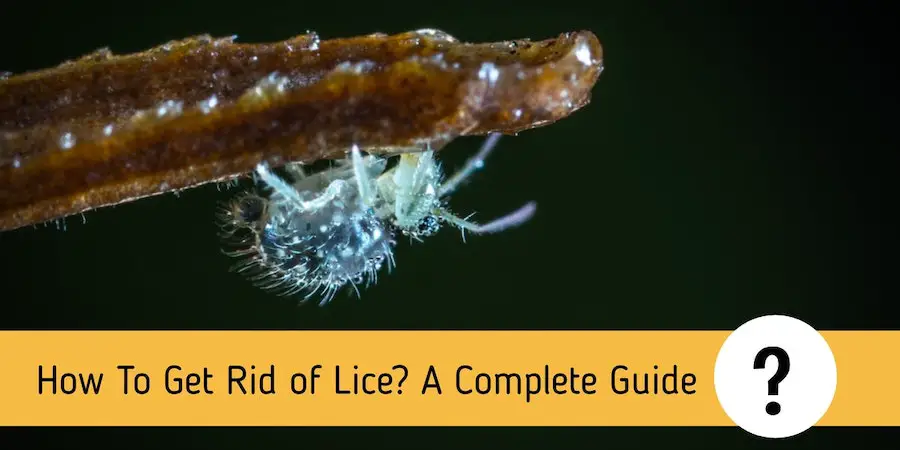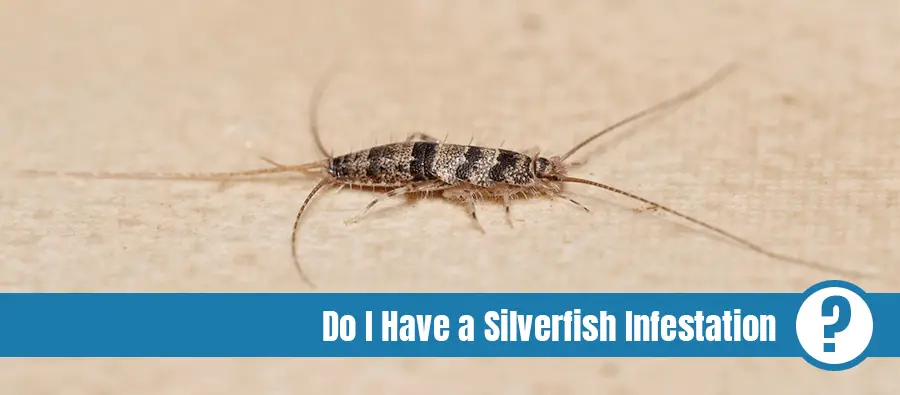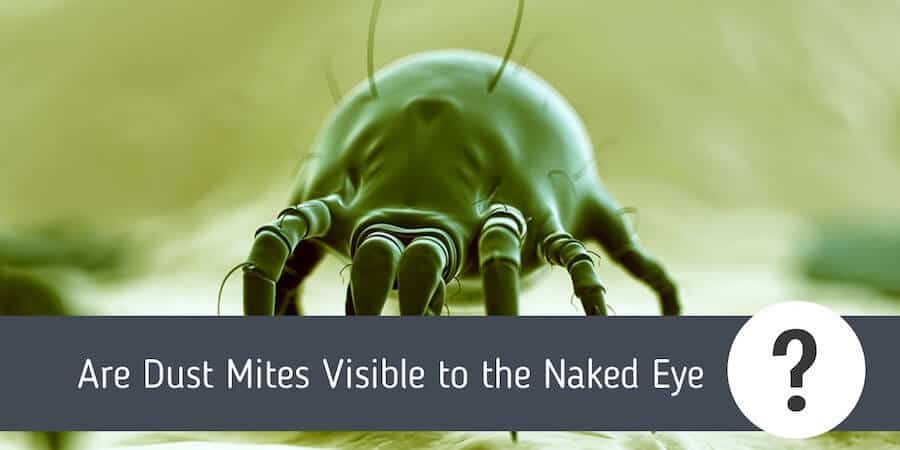When we think of summer, we get excited about all the family trips we have planned and even those lazy days on the porch sipping a glass of freshly squeezed lemonade. One thing that may not have crossed your mind is lice. Although they are present all year round, the peak season for them to start infesting people usually occurs during the summer which is why it’s best to take an extra precaution.
So, how to get rid of lice? Through scientific researches, there are dozens of solutions to treat the age-old lice problem. Treatment ranges from a series of shampoos, lotions, ointments, and even natural oils. Before using any of these products, you would need to make an assessment and check on the fine print for your safety.
In this article, you will learn more about lice and where do they come from, the diseases they carry, how to treat if you have been infected, and most importantly how to prevent it from ever happening again.
Table of Contents
What Are Lice?
The lice or Pediculus humanus spp. is an obligate parasite. This means it is only restricted to infecting humans. However, there are other species in the Pediculidae family that does infect other mammals. If the population of these parasites is not controlled, an infestation would occur and eventually spread to other members of the family, which would be harder to solve. As soon as you see the signs and symptoms, get treated immediately.
Lice range from 2 to 4 mm in length and have a grayish-white color. They have hooked claws at the ends of their legs but are wingless. They spend most of their lives on humans exclusively feeding on human blood.
There are two kinds of lice:
- one that infests the scalp
- another that infests the body
Head lice, in particular, are not known to care about any diseases, unlike body lice.
The only problem that occurs with head lice would be the secondary infections that arise as a result of excessive scratching, whereas body lice may carry pathogens that cause Trench Fever, Lice-Borne Typhus, Vagabond’s Disease, and Lice-Borne Relapsing fever.
Geographical Origins of lice
Lice are categorized in clades that represent different geographic locations and genetics. There are three Clads in total; A, B, and C. According to a parasitology journal, Clade B originated from North America but has found its way to spread across the globe to Europe and even Australia. The results were determined through mitochondrial data.
Unlike some parasites and diseases, there is no known or proven origin for lice. There have been hypotheses stating that they have evolved from other species and adapted to live on humans.
How Do People Get Lice?
Lice transfer through direct contact with someone who has already been infected. Chances are the person who you have gotten the lice from, has been exposed to someone with the same problem. Head lice are a common problem with children.
They often bring home a headful of lice from school and without warning, you would get infected too. Body lice, on the other hand, gets transmitted through direct contact with a person who is infected, or by using their clothes, beds, linen, and towels.
Are Lice Vectors for Diseases?
Head lice are technically harmless. Bites of head lice would definitely cause itching which may result in; anxiety, fatigue, or secondary infections, but they are not known to carry any pathogen that would cause any grave illness.
Body lice are known to carry pathogens and spread diseases, which makes them more dangerous. People with body lice infestation should be treated immediately to avoid getting:
Vagabond’s Disease
This is a result of long-term exposure to lice. Areas that have been heavily bitten would have thick and dark pigmentation. This is often observed on the midsection of the body.
Trench Fever
The result of a Bartonella Quintana infection, this disease was first observed in World War I among soldiers in the trenches. It is characterized by a sudden onset of fever, sore muscles, bones, and joints, as well as skin lesions.
Lice-Borne Relapsing Fever (LBRF)
The result of a Borrelia recurrentis infection, this disease is commonly seen in poverty-stricken populations or those suffering from famine or war. It often occurs in epidemics when the conditions are favorable for the transmission of the vector.
Lice-Borne Typhus
The result of a Rickettsia prowazekii infection, this bacteria is often acquired through the infected excrement of the body lice harboring the pathogen. Without proper antibiotic treatment, the chances of survival are down to 40%.
Typhus itself is not directly contagious from one individual to another; however, if the body lice of an infected patient happen to bite you, their chances of infection is high.
Although the outbreak of lice-related diseases is not as common nowadays, they are still seen in unsanitary prisons or detention halls, impoverished areas, and in developing nations.
Symptoms of Lice Infestation
When we talk about symptoms, we are pertaining to the indication of the disease in question. But having symptoms of lice can immediately confirm the diagnosis unless you actually see a louse in your hair or body.
Symptoms of A Head Lice Infestation
Children are more commonly affected by head lice, but it is not rare for adults to get them too. Once your child is infected, it would be best to treat yourself as well, just as a precaution. Some of the signs and symptoms you would need to look out for is:
Bugs on Clothes or Hair
If you do your laundry and notice a few bugs here and there, it would be best to disinfect the clothes and practically everything it has come in contact with. Lice will not survive without a human host for longer than 24 hours.
Rashes or Red Spotting
When lice bite you, it releases an anticoagulant to prevent the blood from clotting while it is feeding. The bites of these lice may cause an allergic reaction because of the chemicals in its saliva, which would eventually cause rashes or spots. In rare cases, full-on sores are observed.
Excessively Itchy Scalp
Lice bites are itchy. If your scalp is infested, you will be scratching it for relief. Scratching should be avoided to prevent possible secondary infections due to the skin breaking and bacteria from your nails or other sources seeping through the broken skin.
In some cases, the symptoms of head lice are not evident at all. People who are not easily affected by allergens will not be able to feel any itchiness whenever they are bitten. Sometimes the infestation is mild that there is no physical sign of their presence, but they still pose a threat of infecting other people.
Symptoms of A Body Lice Infestation
As we have established, the lice found on your scalp is different from those found on your body. The body lice or the Pediculus humanus corporis often lay their eggs and produce their waste on your skin and clothing. Here are the signs of a body lice infestation:
Intense Itching
Just like the head lice, the saliva of a body louse may cause itching that you are compelled to scratch. Excessive scratching will cause the skin to break which would also lead to a secondary infection on top of the possible infection you might get from a louse carrying a pathogen.
Rashes or Red Bumps
For people with hypersensitivity, rashes and large red bumps are evident. An allergic reaction is set off to protect the body from the foreign anticoagulant that is present in the blood after the bite has occurred.
Thick and Dark Skin
For an infestation that has been left untreated, there will be evident thickening of the skin as well as high amounts of pigmentation. This is often observed in the groin or waist areas.
Diagnosis of a lice infestation can be confirmed by looking at the scalp or skin for obvious signs like eggs and real crawling lice.
How to get rid of lice?
The infestation of lice has been around for centuries, and as the years progressed various treatments have been developed. A survey was conducted by Sanofi Pasteur showed how the majority of mothers have been practicing the wrong methods in treating and managing lice infestation.
According to the Centers for Disease Control and Prevention (CDC), lice treatment is only recommended for people with an active infestation. All the members of your family must be checked and treated immediately.
There are dozens of treatment options available in the market today, but if you want to know how to get rid of lice then there are also quite a few home remedies you can use to solve the lice problem.
Wet Combing
This method has been used for centuries. It makes the lice visible and easier to see. If you do not have the budget for fancy medication, this is definitely an affordable option. The only problem with wet combing is that it is quite time-consuming to do, otherwise highly effective.
Smother Lice
Lice can be killed using almond or olive oil. Simply apply the oil into your hair and scalp. You may create sections to make sure every inch of the scalp is covered. Rinse your hair with hot water and shower with regular shampoo.
Essential Oils
There are a handful of essential oils that have been effective in removing head lice. They are readily available and are easy to buy. When applying, you need to dilute the essential oil with a carrier oil like coconut oil.
Dampen your hair and massage the oil solution onto the scalp and leave overnight. Here are a few oils you can choose from:
- Nutmeg Oil
- Peppermint Oil
- Cinnamon Leaf Oil
- Eucalyptus Oil
- Clove Oil
- Neem Oil
- Tea Tree Oil
- Lavender Oil
Most lice medication are in forms of lotions or shampoos. They may also require the use of a nit comb during application. Here are some effective products to kill lice and keep them away.
Malathion
How to Apply: A nit comb must be used for this medication. Apply the medication onto your hair and scalp and comb through using the nit comb. The second round of treatment may be needed if there are still lice seen after a week of the initial treatment.
Warning: Pregnant or breastfeeding mothers would need to consult with a physician before using this product. It is also unsafe for children below six. Keep the contents away from the open flame as it is extremely flammable.
Ivermectin Lotion
How to Apply: Nit combing is not necessary for this treatment. All you need to do is apply the lotion on dry hair and scalp and leave it on for 10 minutes. Rinse everything out with water. This lotion is highly effective that only one round of treatment would be necessary.
Warning: This treatment is not suitable for babies under six months of age.
Spinosad Topical Suspension
How to Apply: Nit combing is not necessary for this treatment. Similar to Ivermectin, the suspension must be applied to dry hair and scalp and left on for approximately 10 minutes, then rinsed off with water. Repeat treatments are not typically done when this medication is used.
Warning: This treatment is not suitable for babies under six months of age.
Benzyl Alcohol Lotion
How to Apply: A nit comb must be used to apply this lotion. Apply on dry scalp and hair for at least 10 minutes or until it is completely saturated and then rinse out with water. Repeat the treatment when necessary. The lotion can kill the lice, but not the eggs.
Warning: This product is safe to use for pregnant and breastfeeding mothers but not suitable for babies under six months.
Lindane
How to Apply: A nit comb is not needed for this treatment. It is also very strong and should be applied with care. Place ample amount onto dry hair and scalp. Leave on for four minutes and add water to lather the shampoo. Rinse completely after. Avoid repeating treatment with this shampoo.
Warning: There are multiple side effects of lindane, and it should be used with precaution, but it is highly effective in killing lice. The only time to use this shampoo is if everything else does not help with the treatment. If you are pregnant, breastfeeding, underage, elderly, immunocompromised, or weigh below 50 kilograms, do not use this product.
NB! Read the warning labels
Most of the products listed above come with a warning and a handful of side effects which is why it is important to resort to using them when there is no effect with over-the-counter treatments or home remedies. The medications mentioned above are to be recommended by a physician and be used according to its insert.
If you are looking through over-the-counter solutions, you would need to look for pyrethrins. Pyrethrins are naturally available in chrysanthemums and ragweed and are often extracted from these plants. This active ingredient is safe to use for children ages 2 and up, but it will not be able to get rid of nits. You would need to re-apply the solution after the eggs hatch.
When using over-the-counter solutions, remember to purchase a fine-toothed comb or a nit comb to remove the visible eggs from the hair. After the treatment, when the lice are dead, you would need to remove them using the same comb — usually around 8 to 12 hours.
Recommended product to kill lice
Also, there are dozens of lice treatment products available in the market today, but if you want to know how to get rid of lice then here are some products we recommend.
Best Lice Combs
- Nit Free Terminator Lice Comb
- HEAD LICE Comb Set – for Fast Nit and Lice Treatment
- Free 2 B Terminator Lice Comb
Best Lice Shampoos & Rinses
- Fairy Tales Rosemary Repel Daily Kid Shampoo
- LiceLogic Natural Head Lice Shampoo and Treatment
- Babo Botanicals Lice Repel Shampoo
Best Lice Treatment Sprays
- Licefreee Spray Head Lice Spray – Lice Treatment for Kids and Adults
- Eco Defense Lice Treatment for Home, Bedding, Belongings, and More
- Lice Prevention Spray for Furniture and Bedding by AlternaKids
Best Lice Treatment Kits
- Lice Remover Kit by Lice Clinics of America
- Licefreee Kit All-in-One Complete by Tec Labs
- Ladibugs One and Done Lice Treatment Kit
After Treatment Tips
Follow-through is definitely crucial with any medical treatment. After application of the medicated lotions, soaps, or shampoos it is essential to follow these tips:
Do Not Use Regular Shampoo
Using regular shampoo after treatment is definitely not advisable. Regular shampoo would wash away the medication on your scalp, which would ultimately defeat the purpose of treatment.
Two days after the initial treatment, leave your hair to soak in the medication to prevent the lice from coming back to your hair.
Continuously Check for Nits and Lice
After treatment, you would need to check for the possible signs and symptoms. Do this up to three weeks after your treatment to be sure.
Sterilize Combs and Brushes
All combs and brushes need to be disinfected before using it again. Place them in boiling water for about 5 to 10 minutes.
In the event you do not see any results with the use of over-the-counter medication, you would need to proceed to stronger chemicals. If there are still no positive results, it could mean that the lice are immune to the treatment or have been in the area for quite a long time.
In this case, it would be best to consult a physician who could help you acquire a new form of treatment and medication.
How to Prevent Lice?
There is a saying, “An ounce of prevention is worth a pound of cure.” This simply means if you can avoid getting something like an illness, make an effort to actively stop it. It would be great to educate your children on this topic too; here are some tips you must keep in mind.
- Remind your kids to avoid playing with other kids’ hair or directly touching their head with you.
- Avoid sharing personal care items like brush, scarves, hats, and combs.
- Do random examinations and find out if your students are infective.
At the end of the day, our goal is to stop the infestation of lice to prevent infecting other people in the home as well. Getting rid of head lice may be a time-consuming process and would cost a little more than expected especially for special chemicals, but it is definitely worth the hassle.
Final thoughts about how to get rid of lice
Today we described what are lice and where do they come from. Also, you learned about the diseases they carry, how to treat if you have been infected, and most importantly how to prevent it from ever happening again. Hopefully, all of this will help you in the future. If you have any further questions about how to get rid of lice then let us know by commenting here below.





